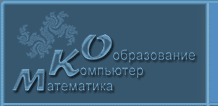|
|
Архив публикацийТезисыXXV-ая конференцияNeural network implementation of the morphological method for recognizing objects in imagesM.V. Lomonosov Moscow State University, Russia, 119991, Moscow, GSP-1, 1-2 Leninskiye Gory, Faculty of Physics, +7(495)939-46-94, zubjuk@physics.msu.ru 1 стр. (принято к публикации)Modern Artificial Neural Networks (ANNs), especially, deep ones, produce remarkable results in many fields of artificial intelligence, particularly, in computer vision. For example, ImageNet Large Scale Visual Recognition Challenge (ILSVRC), which is one of the most popular computer vision contests in the world, have been being regularly won by the ANN-based solutions since 2012. Numerous references to other successful applications of ANNs demonstrating superhuman accuracy in some cases can be found in the literature. However, despite a long history of ANNs, they considered black boxes up to now - for humans it is not easy to understand how ANNs derive their decisions and to forecast their behavior under all feasible circumstances. Meanwhile, understanding function of ANNs can be essential in safety-critical application domains such as aviation, medicine, power systems and so on, where a hidden malfunction could lead to life-threatening actions or enormous economic loss. Moreover, better understanding of the way ANNs derive their decisions can result in development of new ANN architectures and new approaches to training ANNs being more efficient than the currently known ones. We suggest a new type of recurrent ANN which implements an idempotent operator - projection onto a finitely generated cone of images. Such an operator is widely used in Pyt'ev morphological image analysis [1] for solving various problems of computer vision, particularly, the problem of object recognition. Human-comprehensibility of the suggested ANN is derived from Pyt'ev morphological image analysis and based on a comprehensible mathematical model of image registration which states [2] that a finitely generated cone is a set of all images of the same scene taken from the same viewpoint under all feasible lighting conditions. Parameters (weights) of the suggested ANN are reasonably interpretable which makes it possible - to verify the results of automatic ANN training in a human-oriented way, - to assign sensible initial values to ANN parameters in order to speed up training (up to several times in our experiments). This research was funded by RFBR, project number 17-07-00832. [1] Yu.P. Pyt’ev Morphological Image Analysis // Pattern Recognition and Image Analysis 3, 1, 1993. Pp. 19-28. [2] A.V. Zubyuk and A.B. Fedotov An algorithm for object identification based on hyperplane separation but tolerant to illumination and viewing angle variations // Moscow University Physics Bulletin 70, 6, 2015. Pp. 479-483. |

